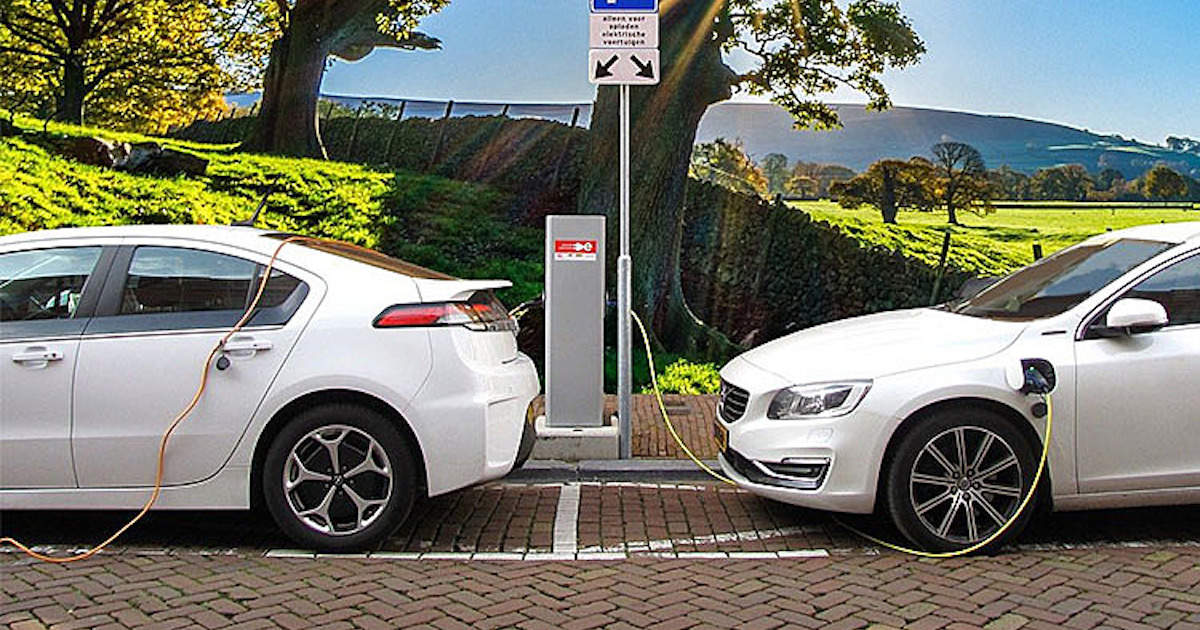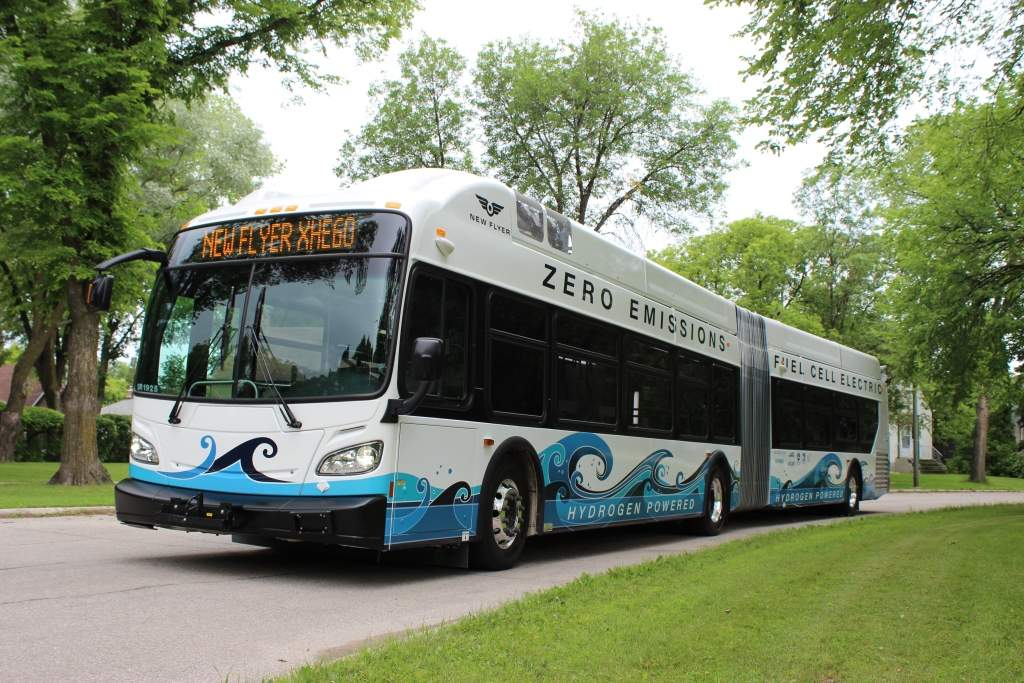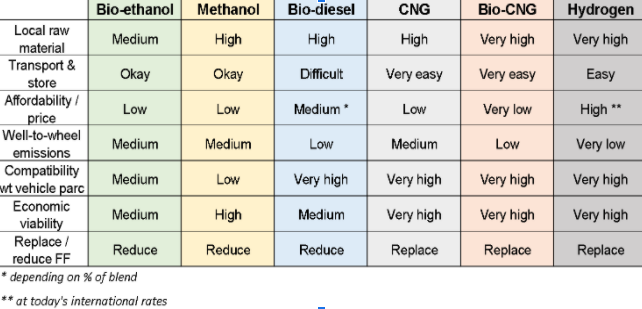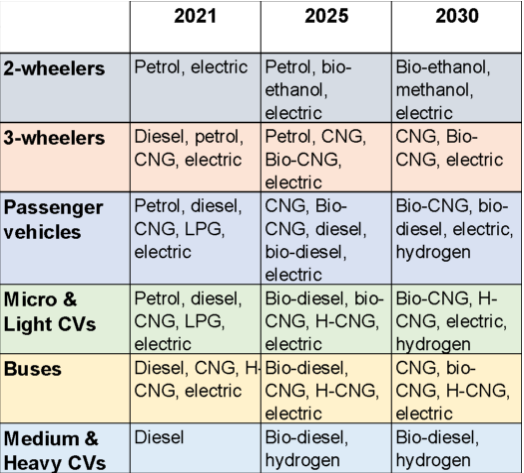 By Avik Chattopadhyay
By Avik ChattopadhyayThe spark
On February 1, 2021, after the budget presentation, on being asked by a television reporter why there was no mention of electric mobility, Nitin Gadkari, the Union Road Transport and Highways Minister, made an interesting remark. “The country needs to explore more self-sufficient and self-reliant methods of powering mobility to reduce our dependence on imports!”
This was significant and one needs to read between the lines; especially if one couples the National Hydrogen Mission [NHM] that was announced by the Finance Minister.
On February 8, the Ministry of New & Renewable Energy told the media that the draft of NHM will be ready in two months. Link this with the fact that Delhi inducted Hydrogen-CNG buses in its fleet in October 2020.
Fast forward a few weeks, and on February 23, the Indian Auto LPG Coalition [the industry body of auto LPG stakeholders] impressed upon the government to promote a few alternative clean energy solutions for mobility rather than focus only on electric. The complete power grid failure in Texas a few days ago due to the freak snowstorm had brought all electric mobility to a standstill and was a clear demonstration of what they meant.
The knock
So, is India’s honeymoon with electric mobility over? Have we already realised that the dodgy power supply situation even in metro cities and the over-dependence on coal for producing electricity is not so ‘clean’ after all?
Methanol, CNG, Bio-CNG and Hydrogen are the four alternative energy solutions to focus on, in tandem with electric, along with the conventional fossil fuels which cannot be wished away at least for the next 15-20 years.~
We are missing the big announcements from the central government for some time now. It is as if the missionary zeal has been handed over to the states in this relay race. Ten states have already announced their electric mobility policies with Delhi surely hogging the limelight with its Switch Delhi initiative. Three or four other states have their draft plans ready.The honeymoon is still on. Look at the hype around Tesla coming to India, as if it is going to emancipate the nation. Experts are confident that it will reinforce the importance of electric mobility as the one and only solution for India.
I believe that is a very narrow view of a sustainable energy solution for a country as vast, diverse, and opinionated as ours. India needs multiple energy solutions, operating at the same time, complementary and cross-contributing. Stand-alone solutions will not work anymore. It cannot be only fossil fuels for 100 and only electric for the next 100. We need to work out our unique ‘Atmanirbhar’ mix of energy systems for addressing all types of mobility, right from the motorised vegetable cart to the luxury inter-state bus.

The twin objectives are clear – improve our energy security, and improve our environment.
The aspect of ‘energy security’ is crucial as it has implications on import of fossil fuels today and any other raw material or input tomorrow, including lithium and cobalt. One cannot merely substitute one with the other. Security means relying on domestic sources of energy and raw materials for the same as much as possible.
Of the close to 250 million metric tonnes of fuel used for road mobility, only around 17% is from domestic production. Diesel makes up around 70% of total consumption, petrol around 20% and the rest is covered by CNG etc. Road transport accounts for 60% of all diesel consumed, followed by agriculture at 18%. Two-wheelers consume 60% of petrol.
In the same vein, improving environment, specifically air quality, implies that not only should the vehicles be as green as possible but also the methods to produce the energy that propels them.
Add the relentless rise in fuel prices over the last 24 months and one cannot but look at a sustainable and balanced mix of energy options.
India will need unique and relevant energy solutions to power it into a 5-trillion dollar economy by 2025. Mobility will be central to this achievement, and without a balanced and judicious mix we might be left lamenting even in 2031!~
So, I reached out to a few domain experts from think-tanks, oil companies, tech research institutions, and automakers, to absorb their views on what an ideal solution can be. I was pleasantly surprised by the passion with which they shared their convictions on the way forward, each being committed to the destination. All that I share from now is a culmination of their inputs, and some desk research I did, to arrive at my point of view.
The route[s]
The 19th century mystic saint Ramakrishna Paramahamsa had said in Bengali, “Joto mot, toto poth” which means, “Many views, many paths” implying that all routes will lead to one universal truth.
Similarly, there are multiple energy solutions for India’s mobility, each aiming at improving energy security and the environment.
I shall not talk about electric here, as much has been written extolling its virtues. I shall look at six alternatives. The parameters I shall use for evaluating them are: –
·Easy availability of raw material / inputs
·Ease of transportation and storage
·Affordability
·Environment-friendly for both production and consumption – ‘well-to-wheel’
·Economic viability
·Compatibility with the existing vehicle parc
Bio-ethanol
Bio-ethanol is an alcohol-based energy fluid produced from sugar-based bio-mass [like sugarcane, sorghum, and sweet beet] and starch containing products [like corn and cassava]. In India close to 98% of ethanol is produced using sugarcane and molasses. From 2008 the government has allowed petrol to be blended with 10% ethanol [E10] with the target to go up to 20% by 2030 [E20].
However, production by the oil companies has been much lower due to the conflict with “food security”. Transportation has also been an issue with dedicated pipelines not yet in place.Even if it is compatible with current 2-wheelers [2Ws] and passenger vehicles [PVs], pan-India availability of raw material has been a constant limiting factor to seeing this alternative take centre-stage.
Methanol
Similar to ethanol, methanol is another alcohol-based energy fluid produced from bio-mass, natural gas, coal and cellulose. This fuel has strong support from some key think-tanks including NITI Aayog, according to some sources. A 3% blend is being tried on petrol-run 2Ws and PVs. Tests have shown that methanol leads to excessive corrosion in current engines being used. Adopting methanol would need modifications in both engine components as well fuel dispensing stations. India does not have too much of natural gas and coal is not the cleanest of sources [as in electricity]. Given its corrosive nature, transporting, and storing methanol will require specific investments.
Last week, a team from University of Illinois, Chicago, wrote in the journal Proceedings of the National Academy of Sciences that it has been able to convert methane in natural gas into liquid methanol at room temperature. This obviously has made technologists sit up in excitement!
Bio-diesel
Bio-diesel is a fuel produced from non-edible oils, acid oils, used cooking oils, animal fat etc. From 2015, around 5% has been blended with high-speed diesel. Though totally compatible with all current PVs and commercial vehicles [CVs], lack of regular feedstock supply and its rapid degradation when stored for a long time has not seen its popularity rise in spite of the economics being clearly in its favour.
CNG
CNG is a gaseous energy not new to all of us readers. There are an estimated 3 million vehicles running on CNG saving almost 3% of fossil fuels. The target is to have 20 million CNG vehicles by 2030 based on an increase in dispensing network from the measly 1700 stations [vis-à-vis 55,000 for petrol + diesel] to 10,000.
Automakers like Maruti Suzuki and Hyundai are betting big on CNG as tomorrow’s fuel.
Bio-CNG
Bio-CNG is a purified biogas,with properties similar to CNG. It is produced from biomass, agricultural residues, food waste, animal dung and sewage water. It can be dispensed from the same outlets that carry CNG. As a gaseous energy this has tremendous potential given its all-India footprint, covering the rural areas very well and compatibility with current 2Ws, PVs, 3-wheelers and light commercial vehicles.
I did not spend much time on LNG as we will have to import it and that is counter to the key objective. So, to the last of the alternatives.
Hydrogen
Hydrogen is a serious challenger to the electric juggernaut. Hydrogen is a zero-carbon fuel which on combustion in conventional IC engines, directly or blended with petrol or CNG, leaves behind only water as a residue. It has the highest energy content of all gases at 120.7 kilojoules/gram. Most of hydrogen is sourced from hydrocarbons using natural gas reforming or electrolysis of water. However, there are other sources like nuclear power, biomass, solar and wind.
It comes in 3 varieties – grey [from fossil fuels], blue [from fossil fuels with carbon capture and storage] and green [from renewable sources].
The world already has 3 Hydrogen Fuel Cell vehicles on sale – Toyota Mirai, Hyundai Nexo and Honda Clarity. Proof of concept has already happened. In India, Mahindra and Bajaj have brought hydrogen-run 3-wheelers. At an 18% blend with CNG, H-CNG becomes a very good option and is being tested successfully. IndianOil and NTPC are running pilot projects as are quite a few engineering institutes across the country.
The government has set aside INR 25 crore for R&D as part of the NHM. It is a pittance but at least some positive intent has been shown. The 5 focus areas for the NHM are R&D, demand creation, industrial application, creating the eco-system and international partnerships.
Hydrogen does have its Achilles heel in the current cost of production and issues with storage. What then, five years ago cost was an issue with the lithium-ion battery too!
Here is my evaluation of the 6 alternatives on the parameters I have mentioned above:

My assessment says that Methanol, CNG, Bio-CNG and Hydrogen are the four alternate energy solutions to focus on, in tandem with electric, along with the conventional fossil fuels which cannot just be wished away at least for the next 15-20 years.
Given the country’s vast types of motorised vehicles in operation and regional variations, there needs to be at least 3 options available to any individual at any location in this country, including the conventional fuels.
The vehicles
Two-wheelers have to switch to bio-ethanol, ethanol or electric. They use up 60% of petrol and this dependence has to be brought down rapidly. There should be a plan to move to E1100 or M100.
Three-wheelers are already running on CNG and electric along with diesel and petrol. The use of CNG, Bio-CNG and electric has to grow. Methanol can also be explored, given the huge numbers and applications.
Passenger vehicles will also use a mix of options depending on use for public and private transport. All public transport should move to CNG / Bio-CNG / hydrogen / electric. All private vehicles should gradually switch to bio-diesel / hydrogen / electric.
Buses, of all lengths and applications should move to CNG / Bio-CNG / H-CNG / electric.
Light commercial vehicles should continue with CNG and also adopt Bio-CNG / H-CNG / electric.
Medium and heavy commercial vehicles should gradually transition to bio-diesel. Hydrogen can also be explored by some manufacturers in the long-run. The Hyundai Xcient fuel cell truck is already in commercial production. Nikola, Toyota, and Kenworth are exploring the same.
Rural transport, be it people or goods, will hugely benefit from both bio-diesel and bio-CNG solutions, especially the latter.
If I were to crystal-ball gaze into the transition over this decade, this is what it could look like:

To conclude, India will need unique and relevant energy solutions to power it into a 5-trillion dollar economy by 2025. Mobility will be central to this achievement and without a balanced and judicious mix, we might be left lamenting even in 2031!
(The author is co-creator of Expereal India. Also, he is former head of marketing, product planning and PR at Volkswagen India.)
(DISCLAIMER: The views expressed are solely of the author and ETAuto.com does not necessarily subscribe to it. ETAuto.com shall not be responsible for any damage caused to any person/organisation directly or indirectly.)















